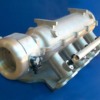PD,
There are a number of companies that make a good ECU. For the street, the discriminators are not that large and a lot comes down to personal preference because you end up having to address the same things with them all before you're through. My choice was Electromotive for a variety of reasons. It's more expensive than some but not the most expensive. I'm not a "cost is no object guy" but am also not driven by the most bang for the buck argument. I certainly would not begrudge anyone who is. I'm not interested in trying to cost justify my hobby. Like most, I just have some goals and expectations and am working towards them.
As previously discussed, for IR EFI, I feel that Electromotive has some advantages and doesn't give anything away elsewhere. I decided to go crank trigger and EM has great ignition. It's where it started for them. In for a penny in for a pound I figure. When I get the car fully set up and instrumented, I'm looking forward to lap top tuning as I'm quite comfortable with PC data acquisition, programming, logging, etc.
I also think they have a good rep for durability, reliability, and after sales support. I mulled the decision over with some other friends who are very knowledgable and we're all building Electromotive driven IR EFI systems with my hardware. You would recognize them as they are currently or have been respected members of this furum.
One of them is an EM distributor. He runs what he sells and sells the equipment because it's his equipment of choice. This also provides a network of guys with similar engines that I can leverage knowledge and experience from. -Always fun to share experiences.
I may have mentioned this before, but the Kinsler site really does have a lot of good information available. Go have a look at the EFI section and EFI section of the tech catalogue. It provides a good overview, diagrams, history of fuel injection, and is informative. Also makes some comparisons to mechanical and carb analogues. There is a good ECU comparison chart in the tech catalogue that is worth viewing. Kinsler stuff is pricey but good quality. They've been in the biz a long time and are definitely EFI experts.
Hope this helps.
http://www.kinsler.com/catalog.htmKelly


